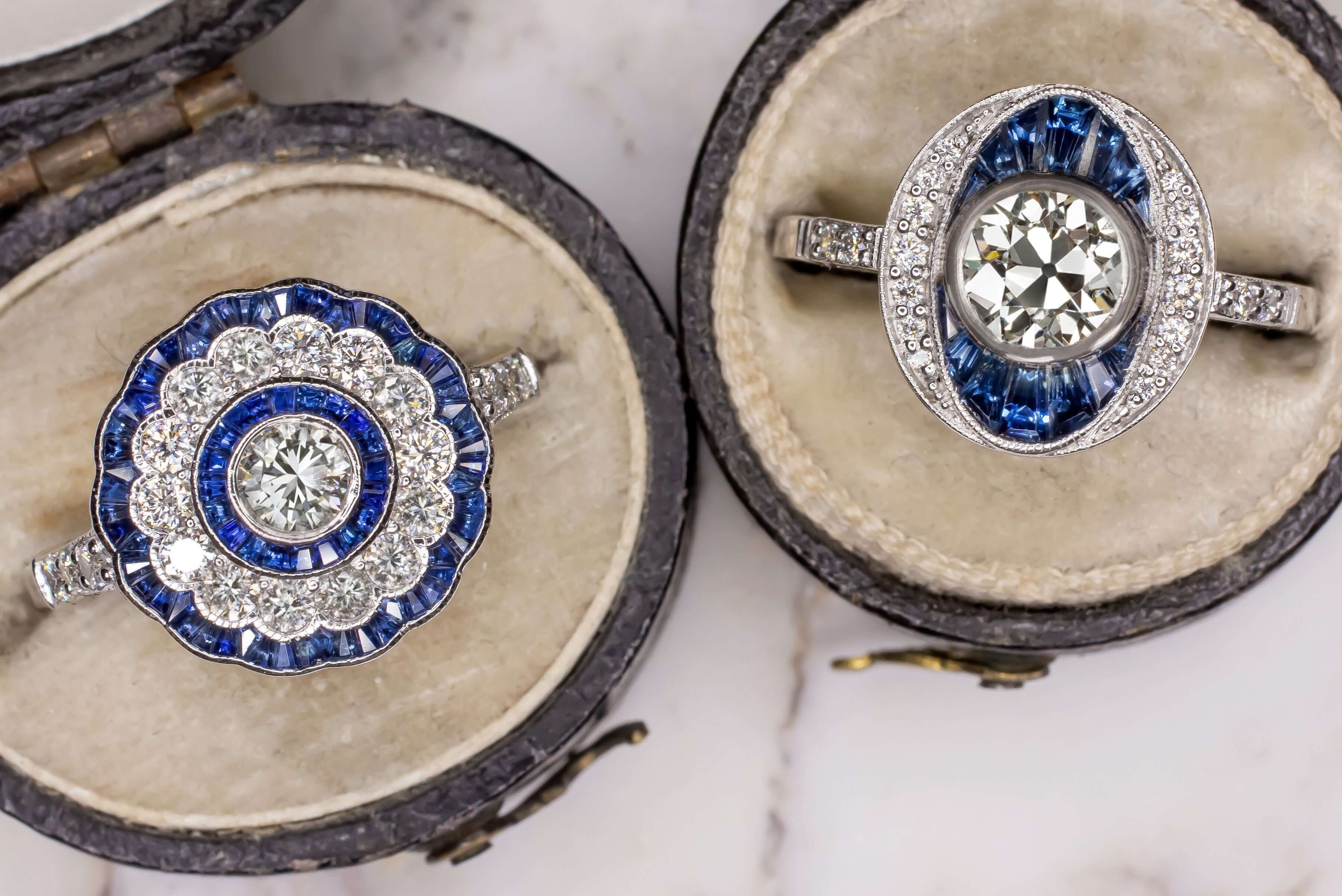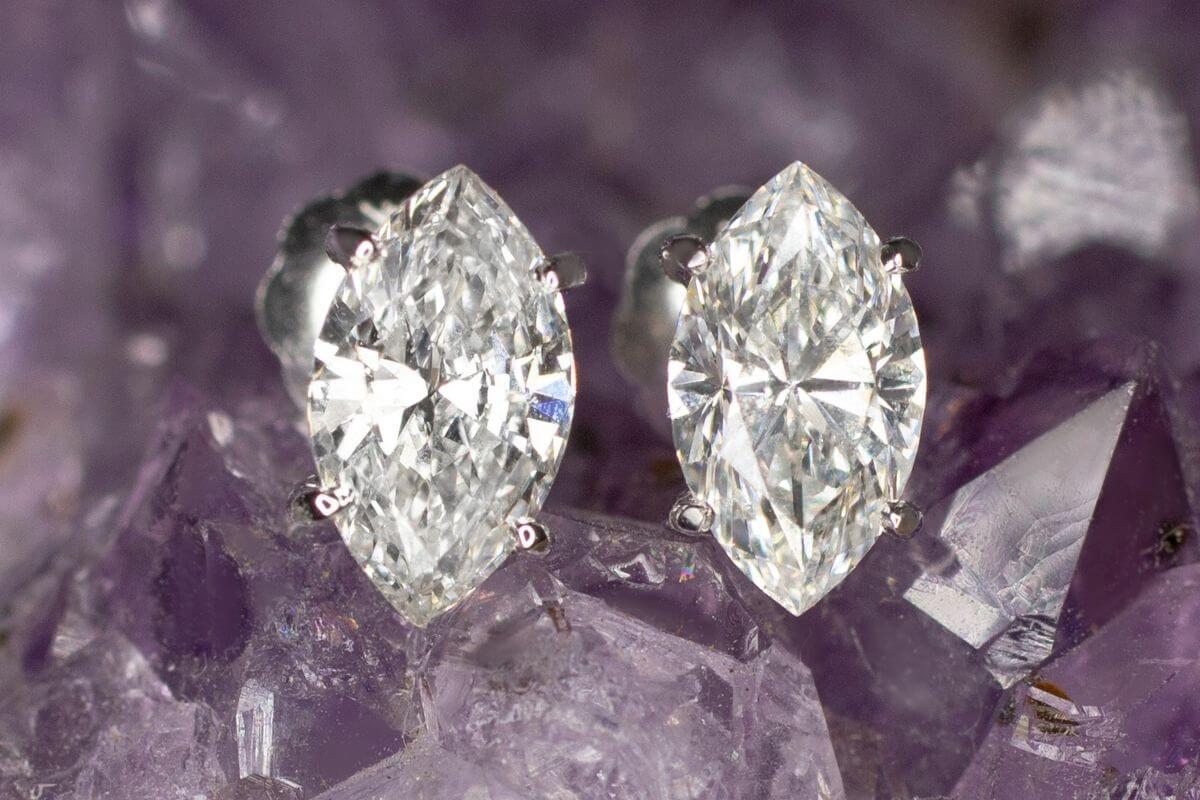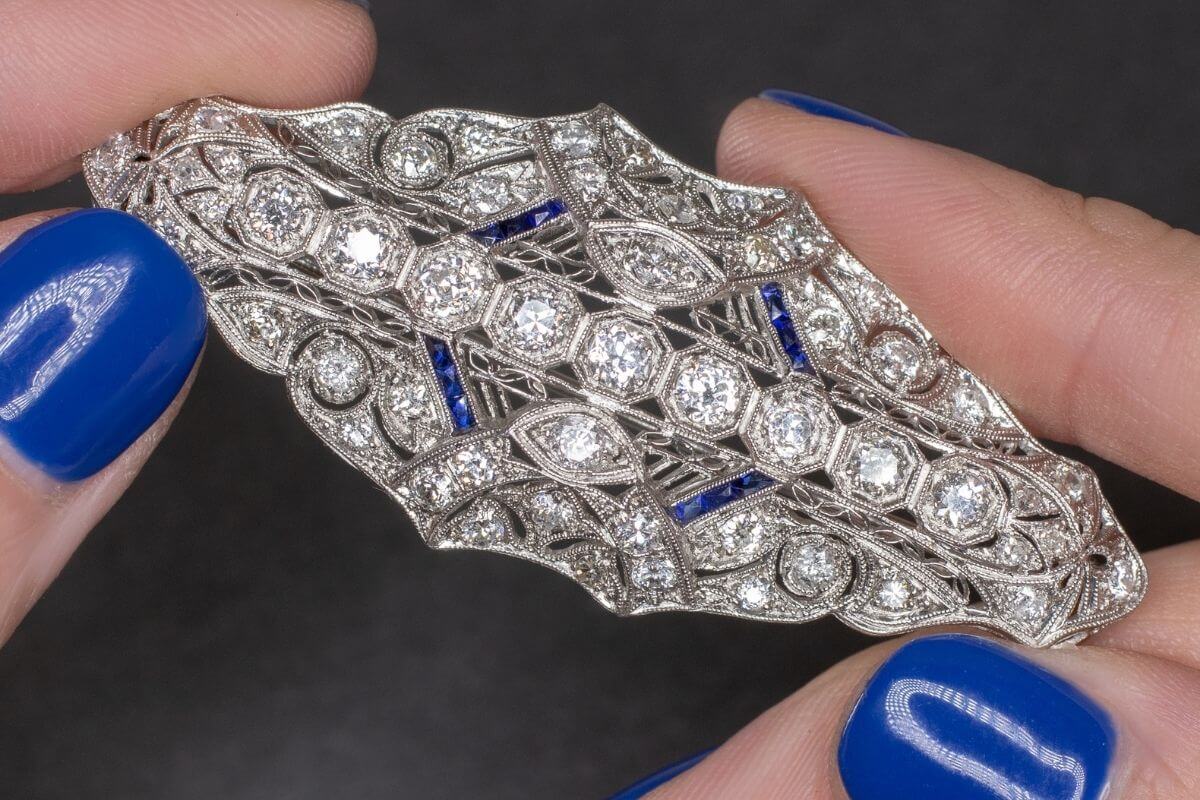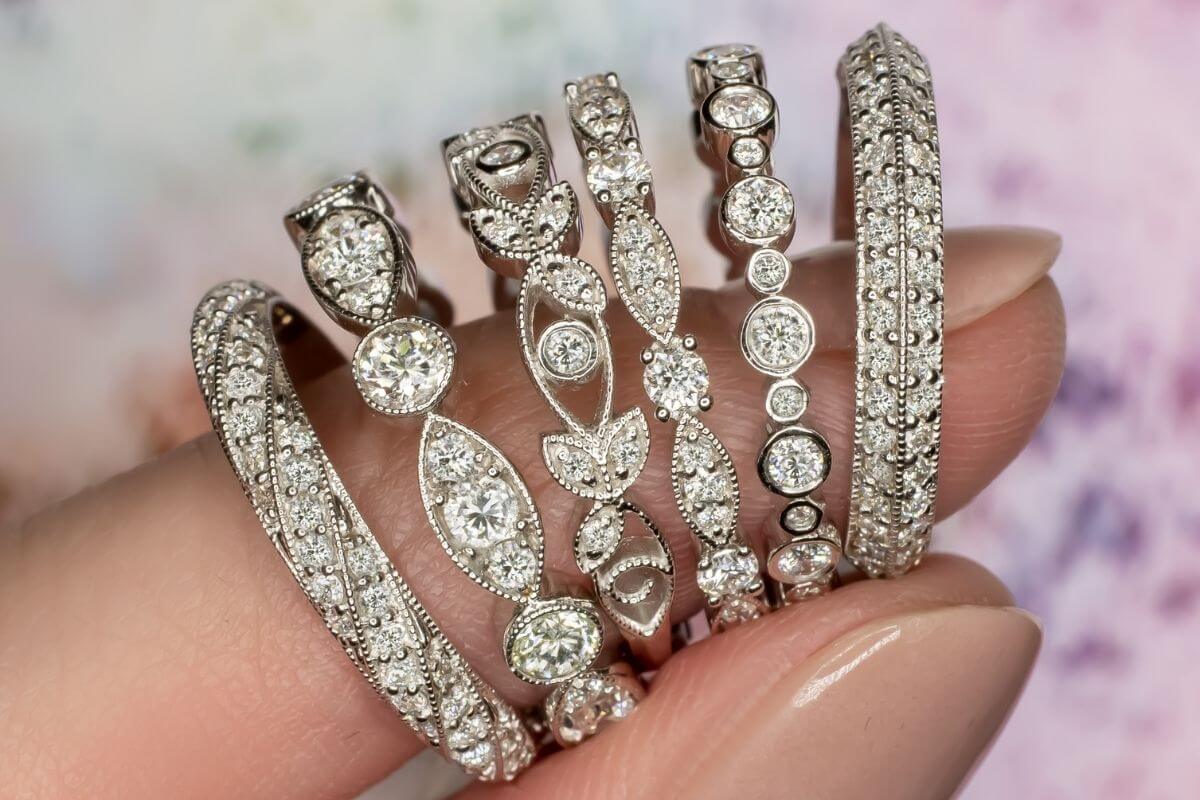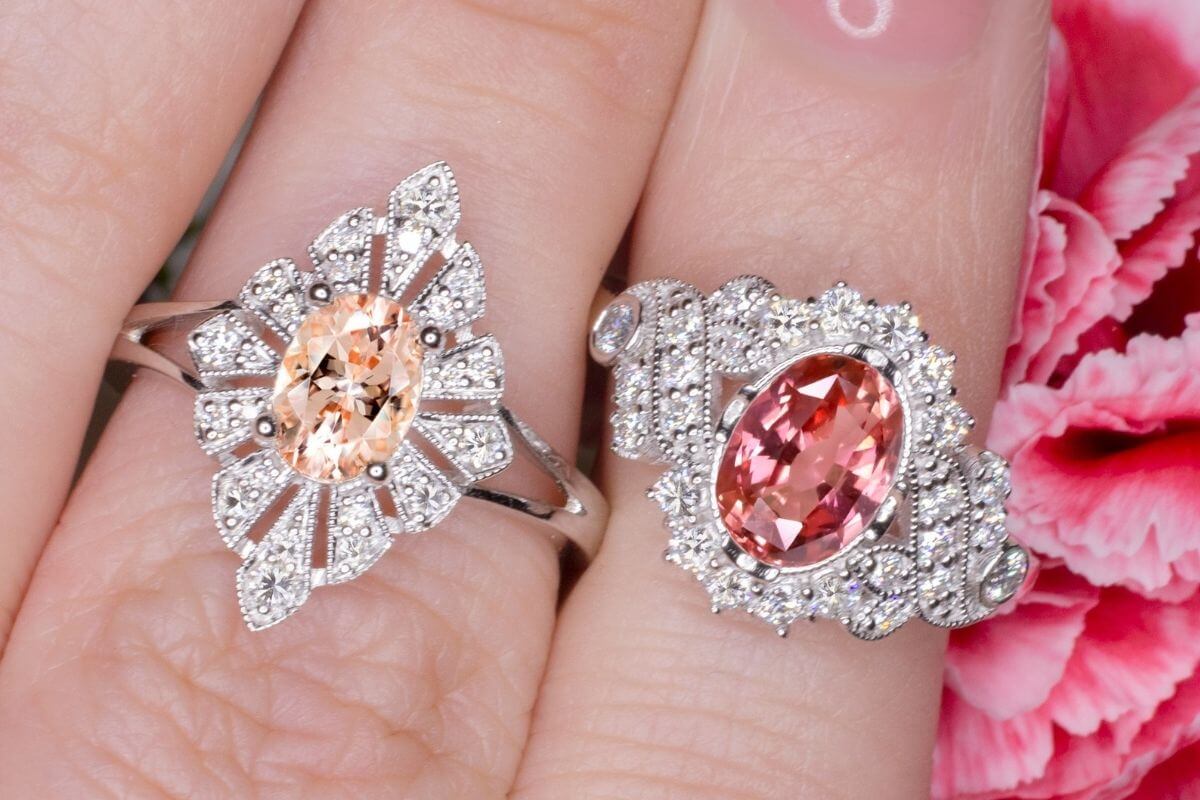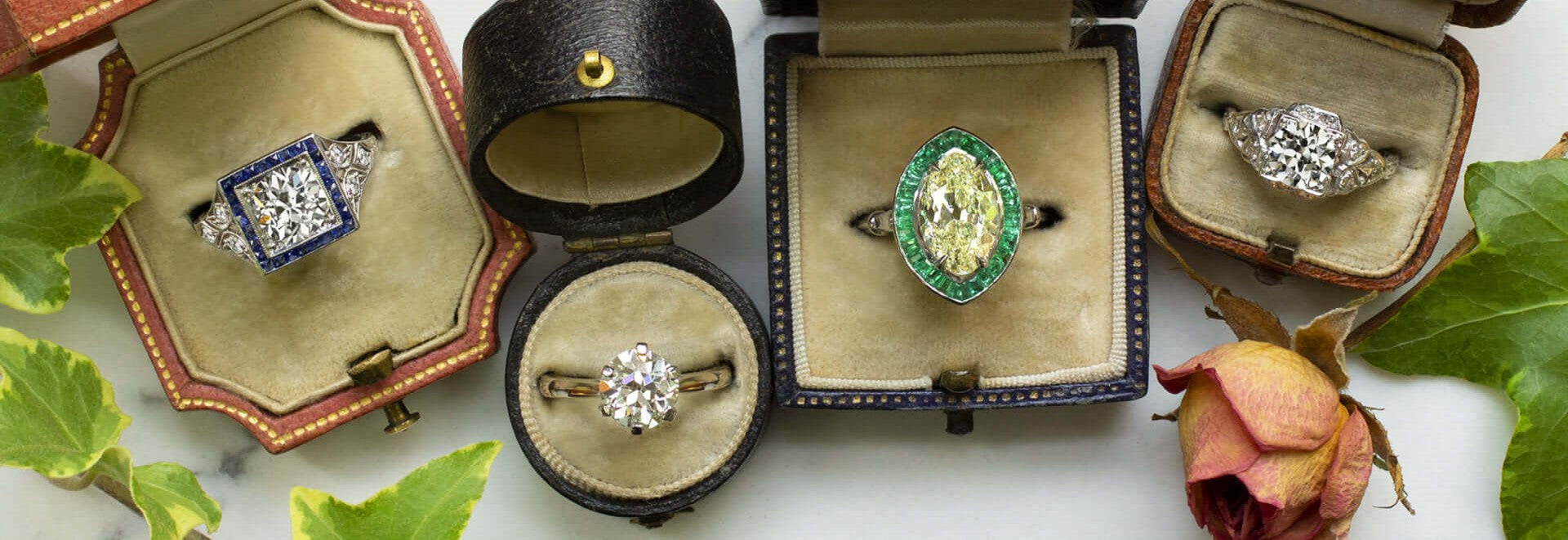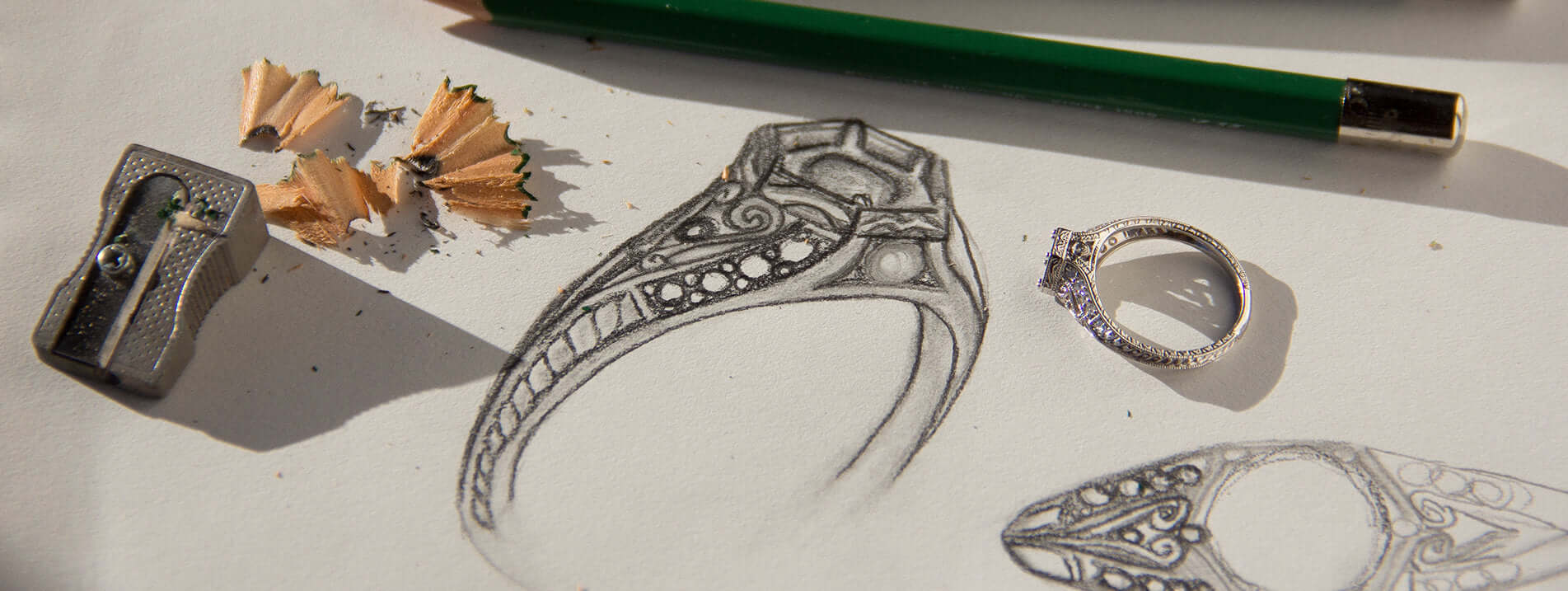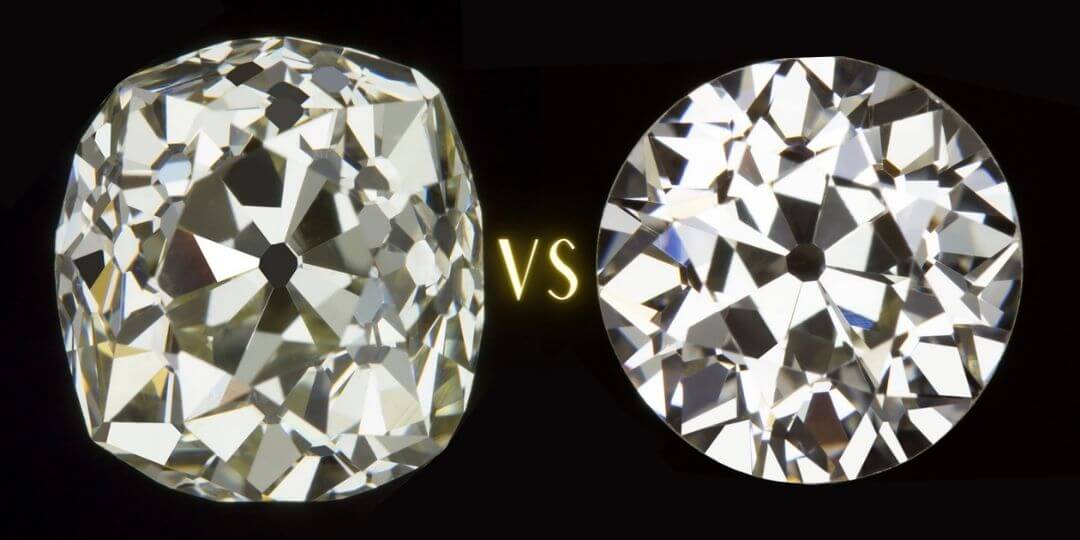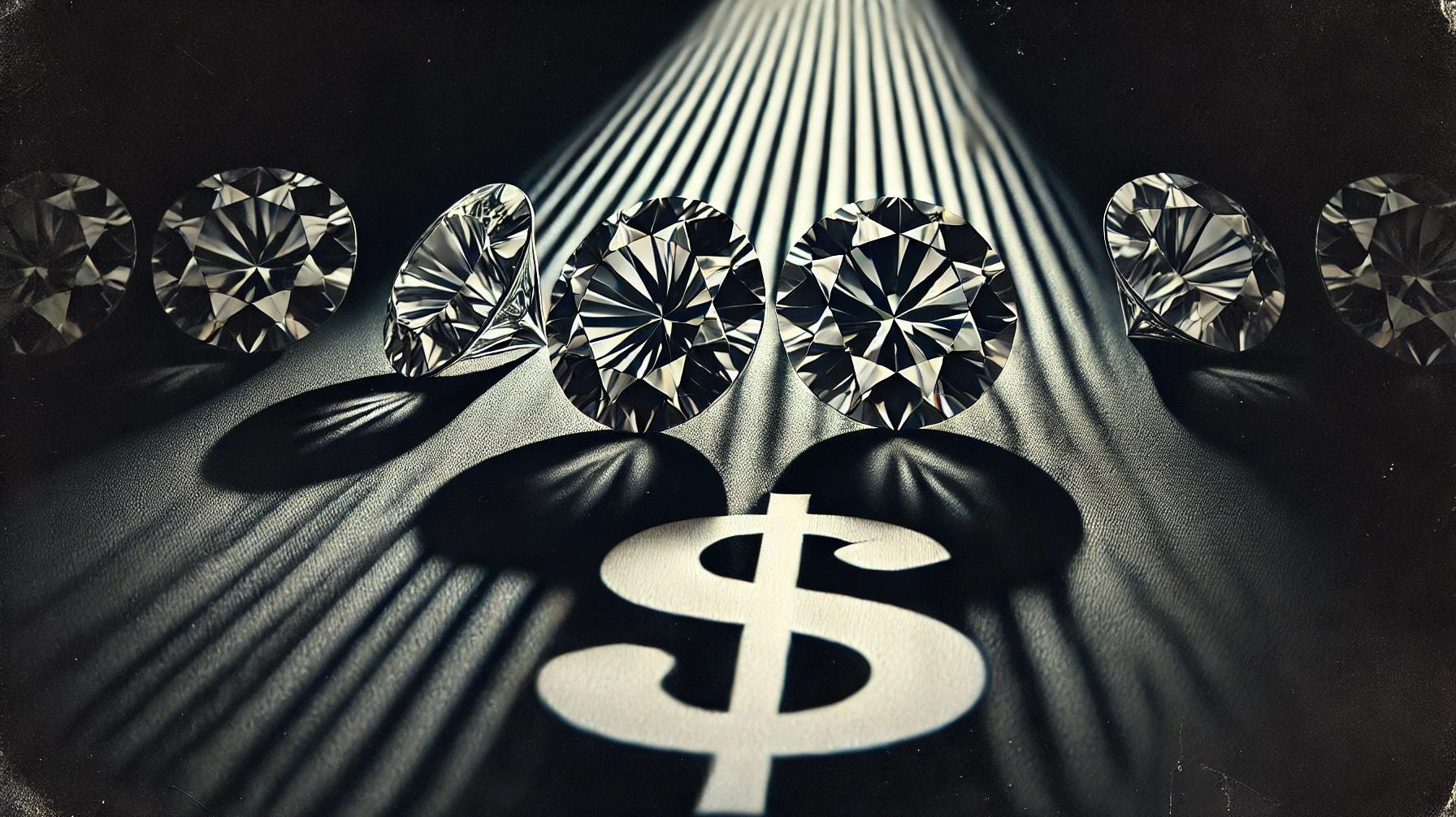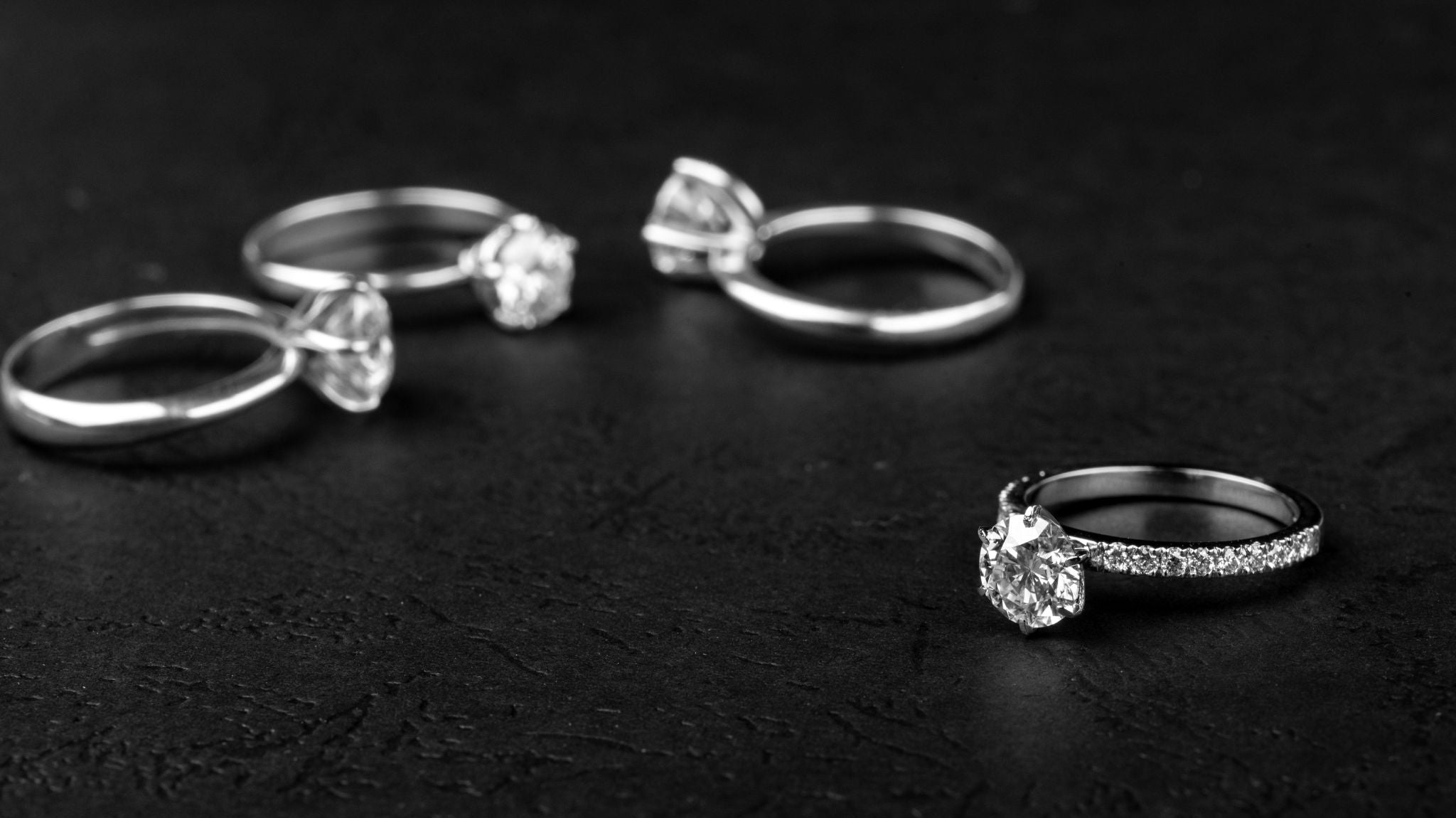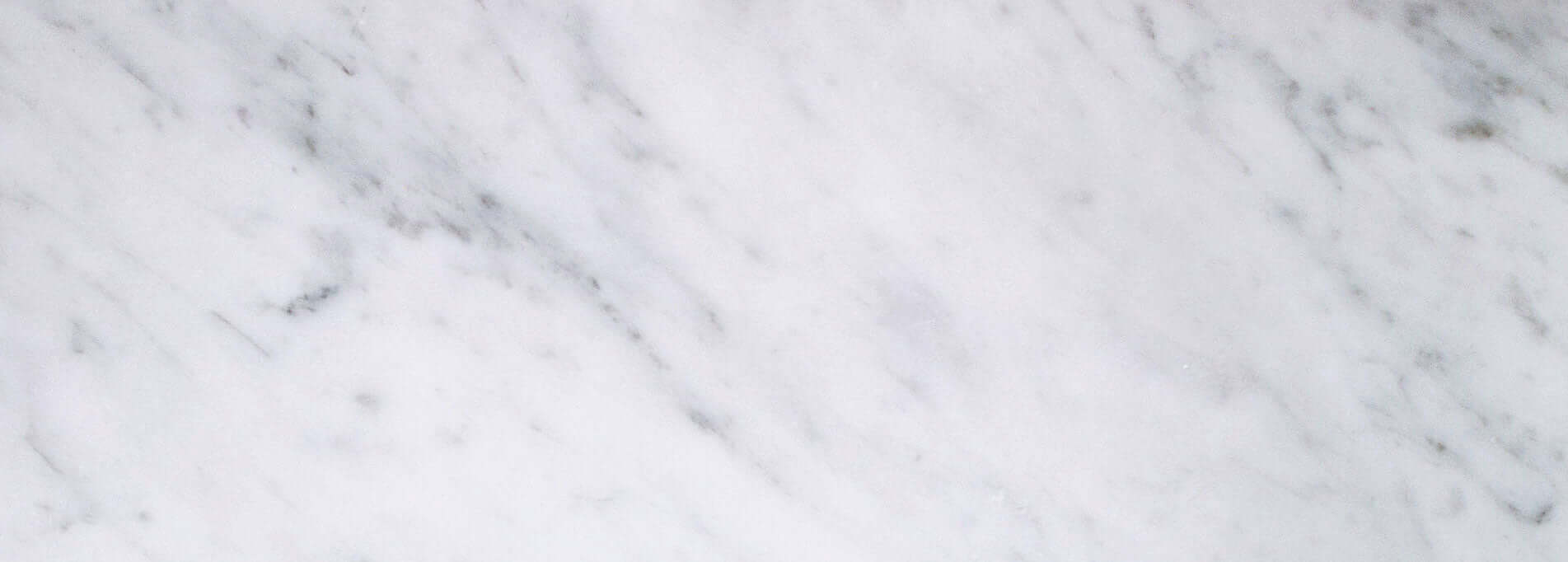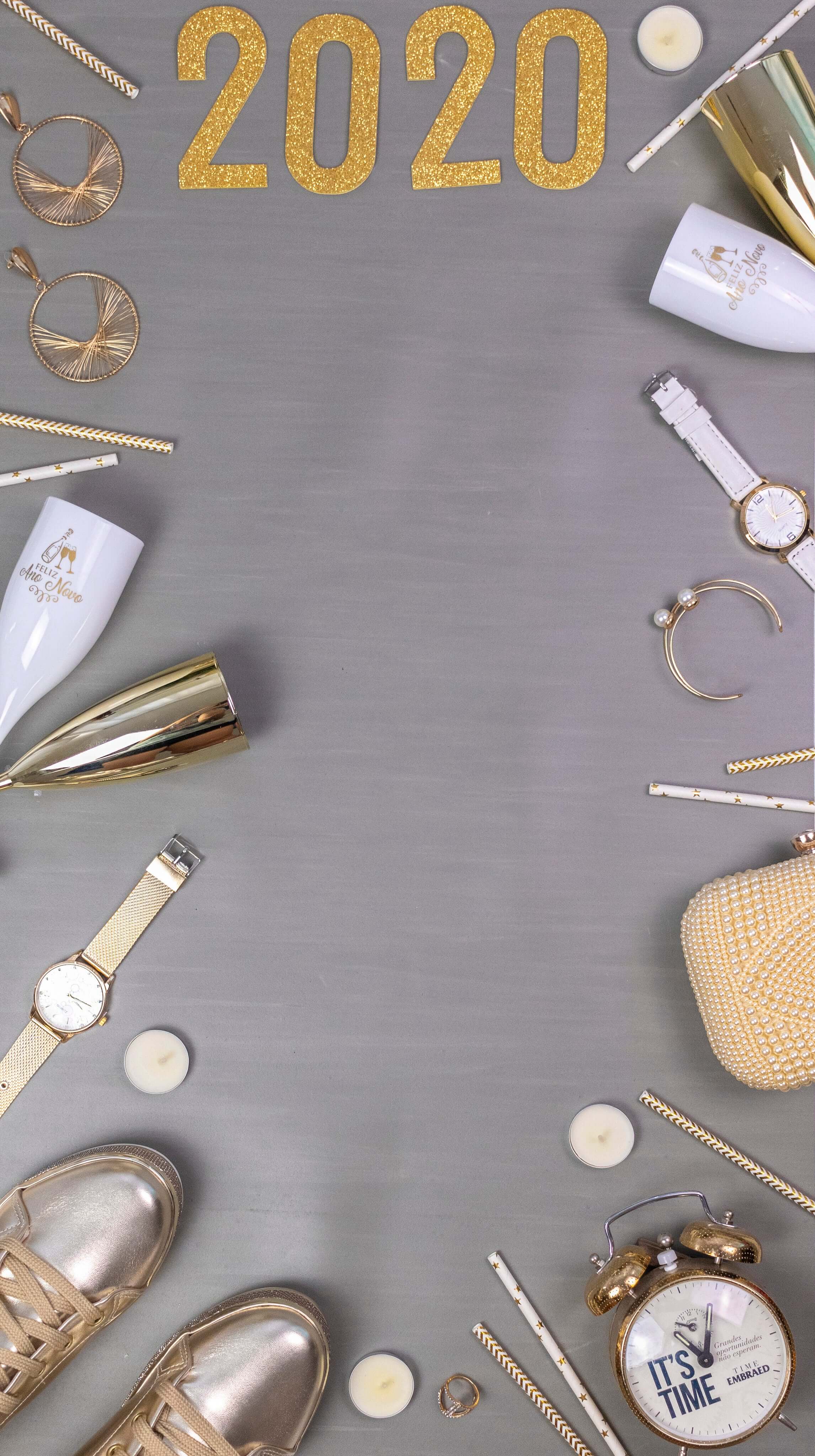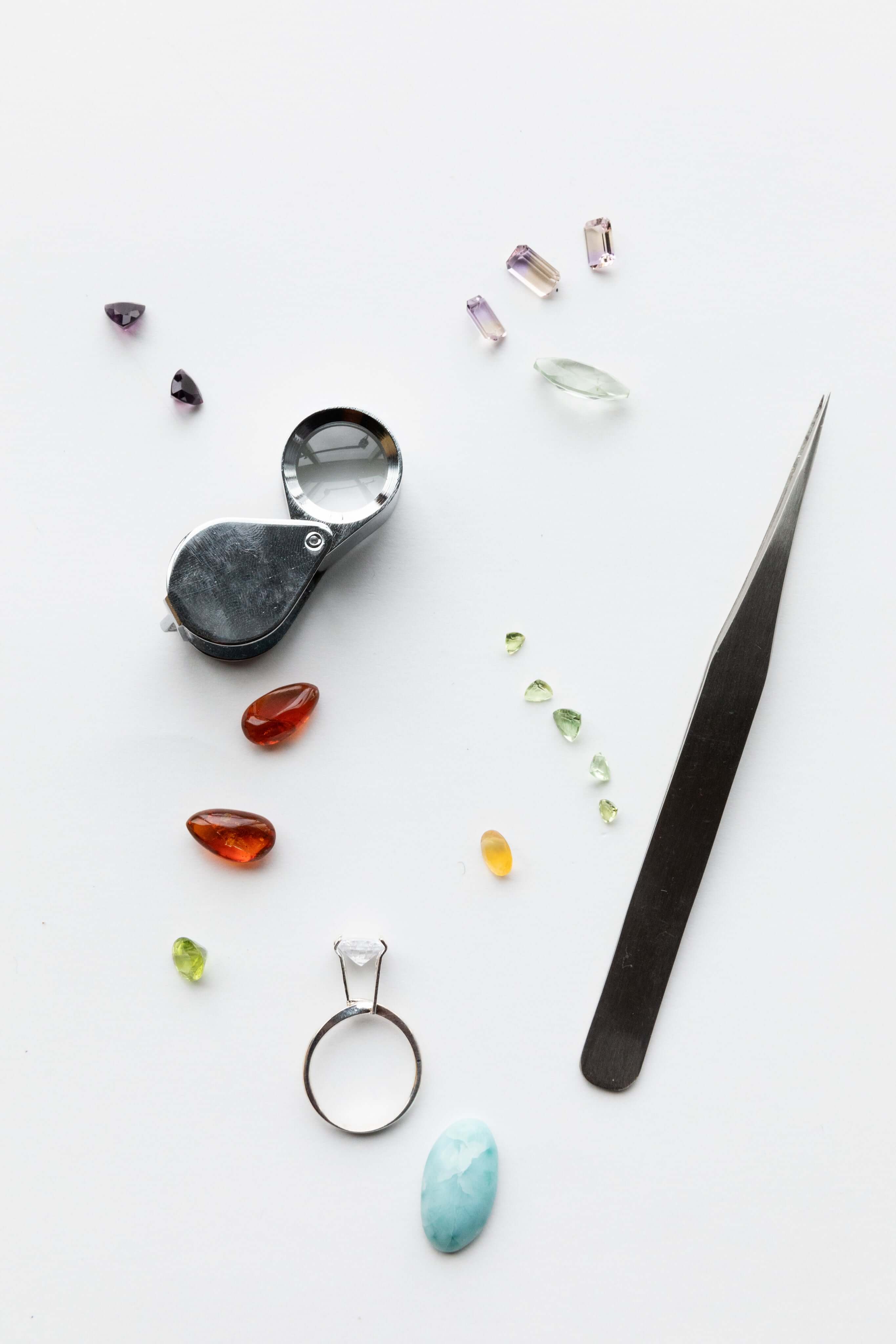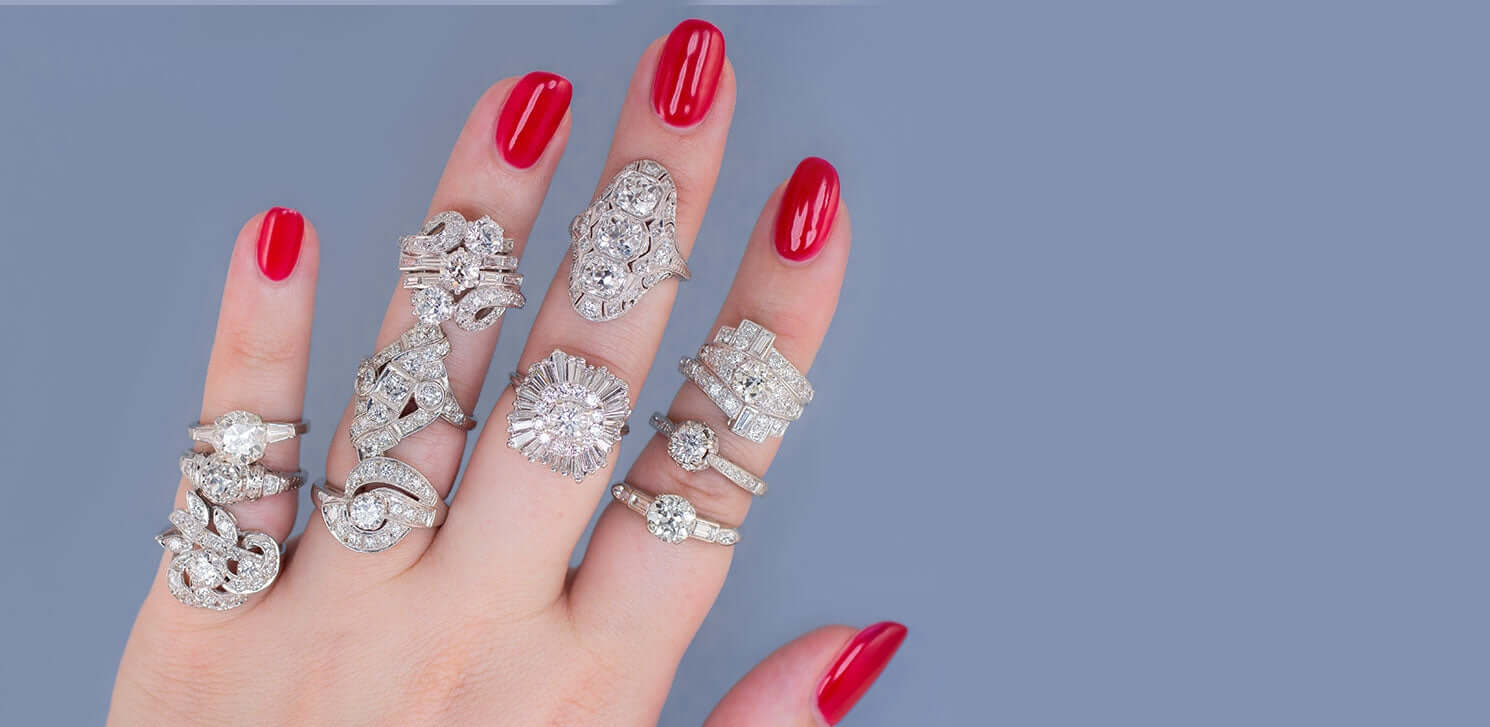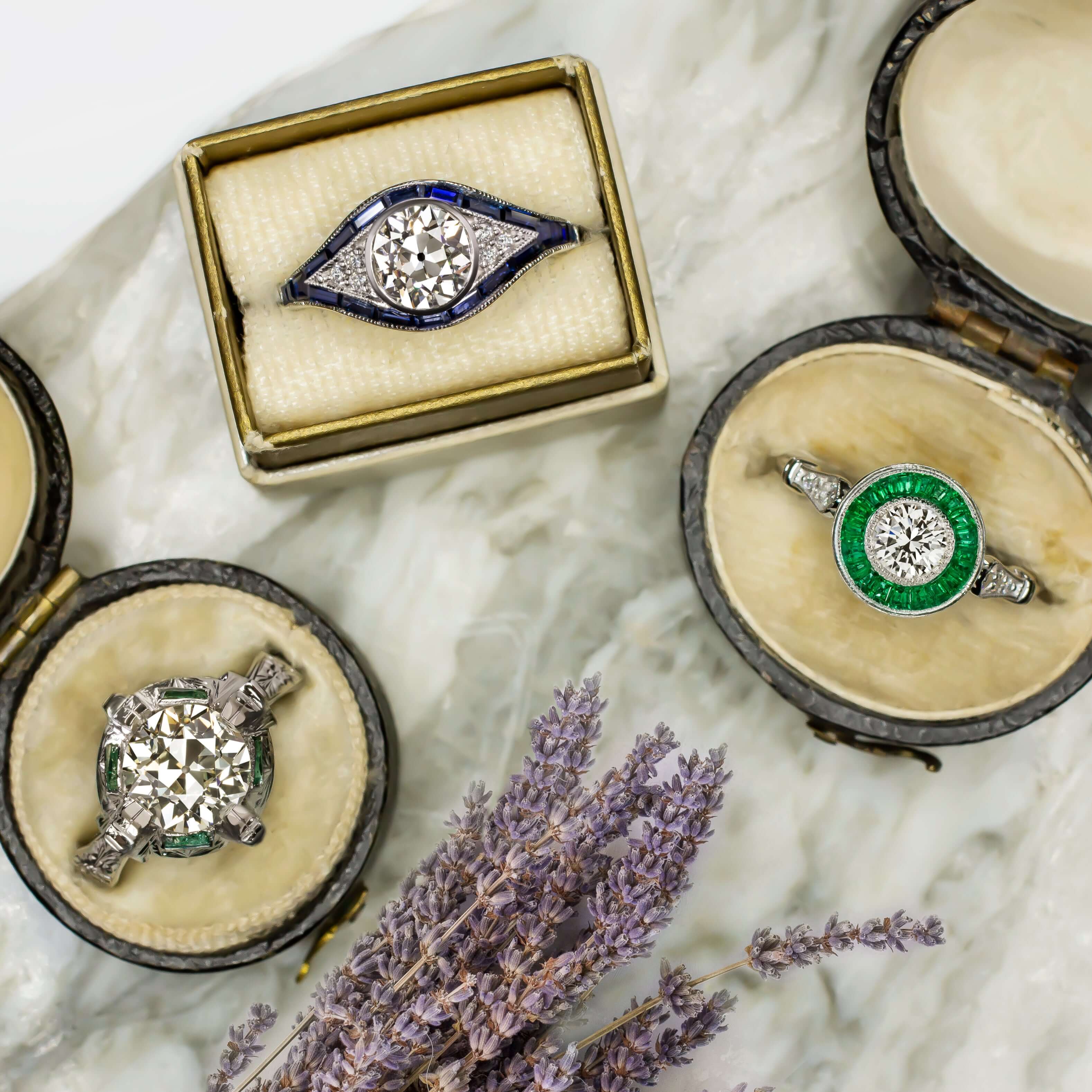The terms Old European cut and Old Mine cut are commonly confused. The majority of diamond dealers are not versed in antique jewelry and often apply a blanket title of “old miner” to all antique diamonds. In actuality, Old Mine Cuts and Old Europeans are quite different.
Historically, the Old Mine cut diamond has its origins in the 18th century and they were typically cut prior to Old European cuts. As the name implies, Old Mine cuts resemble the rough form as it came from the mine. Diamond cutters at the time tried to retain as much weight as they could and most of the rough came in a square-like shape. This resulted in a similar square-like shaped diamond after it was cut and polished. It was either square or rectangular with slightly rounded corners, which is a similar to a cushion cut. Over time, they were being cut with more rounded the corners. The diamond cutting technology during the 18th and 19th century was very rudimentary so therefore it is common to see old mine cut diamonds with less than perfect symmetry and larger facets. Other common characteristics of the old mine cut is a large open culet, bruted girdles, and large depth percentages. With rounded corners or the rarely found square corners, Old Mine Cut diamonds have great fire and broad flashes of sparkle. Today, many old mine cuts are often considered “cushion brilliant cuts” which trade at a premium compared to the modern cushions, known as cushion modified brilliants. Old mine cuts were the most popular diamond shape in the 19th century and its timeless design is reflected in the demand for Cushion Brilliant cuts today.
 Old European cuts had their reign of popularity from the late 19th century to early 20th century. Advances in diamond cutting technology allowed cutters to efficiently create round shapes with less weight loss. Quickly, this new round diamond cut was embraced by diamond cutters in Europe, thus coining the term the European cut. This new round stone still had the open culet, though not often as large. The Old European also featured a tall crown, small table and wide faceting that can was also found in the Old Mine Cut. The symmetry typically was better in the Old European cut as the techniques became more refined. Also, the round shape created allowed for a more proportional stone with less variability than the Old Mine Cut. Today, true old mine cut diamonds are more difficult to find than Old Europeans. There were commercial mines producing more rough during the time when Old Europeans were popular so there are more of them in existence. Nonetheless, they are both very rare in comparison to modern diamonds and they have both been out of production for about a century. A fine Old European or Old Mine Cut has now become a collector’s item.
Old European cuts had their reign of popularity from the late 19th century to early 20th century. Advances in diamond cutting technology allowed cutters to efficiently create round shapes with less weight loss. Quickly, this new round diamond cut was embraced by diamond cutters in Europe, thus coining the term the European cut. This new round stone still had the open culet, though not often as large. The Old European also featured a tall crown, small table and wide faceting that can was also found in the Old Mine Cut. The symmetry typically was better in the Old European cut as the techniques became more refined. Also, the round shape created allowed for a more proportional stone with less variability than the Old Mine Cut. Today, true old mine cut diamonds are more difficult to find than Old Europeans. There were commercial mines producing more rough during the time when Old Europeans were popular so there are more of them in existence. Nonetheless, they are both very rare in comparison to modern diamonds and they have both been out of production for about a century. A fine Old European or Old Mine Cut has now become a collector’s item.

